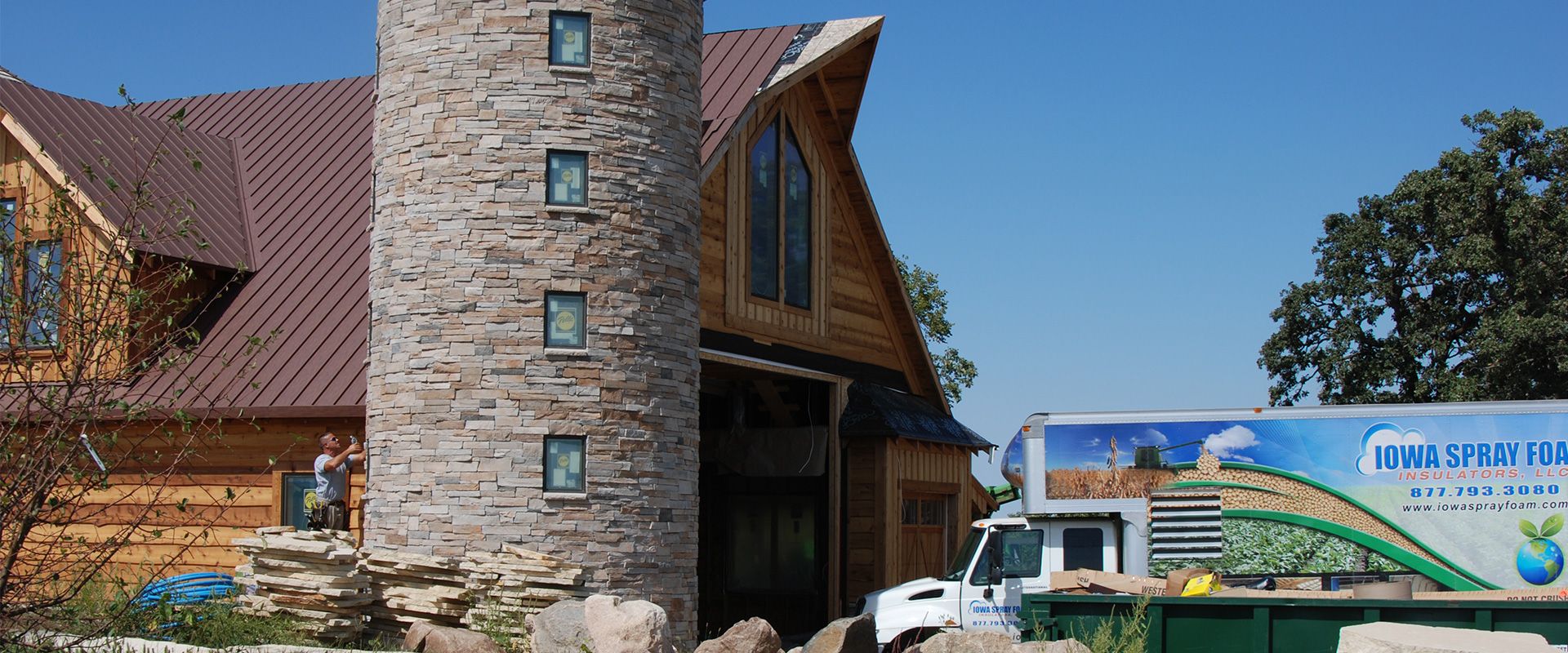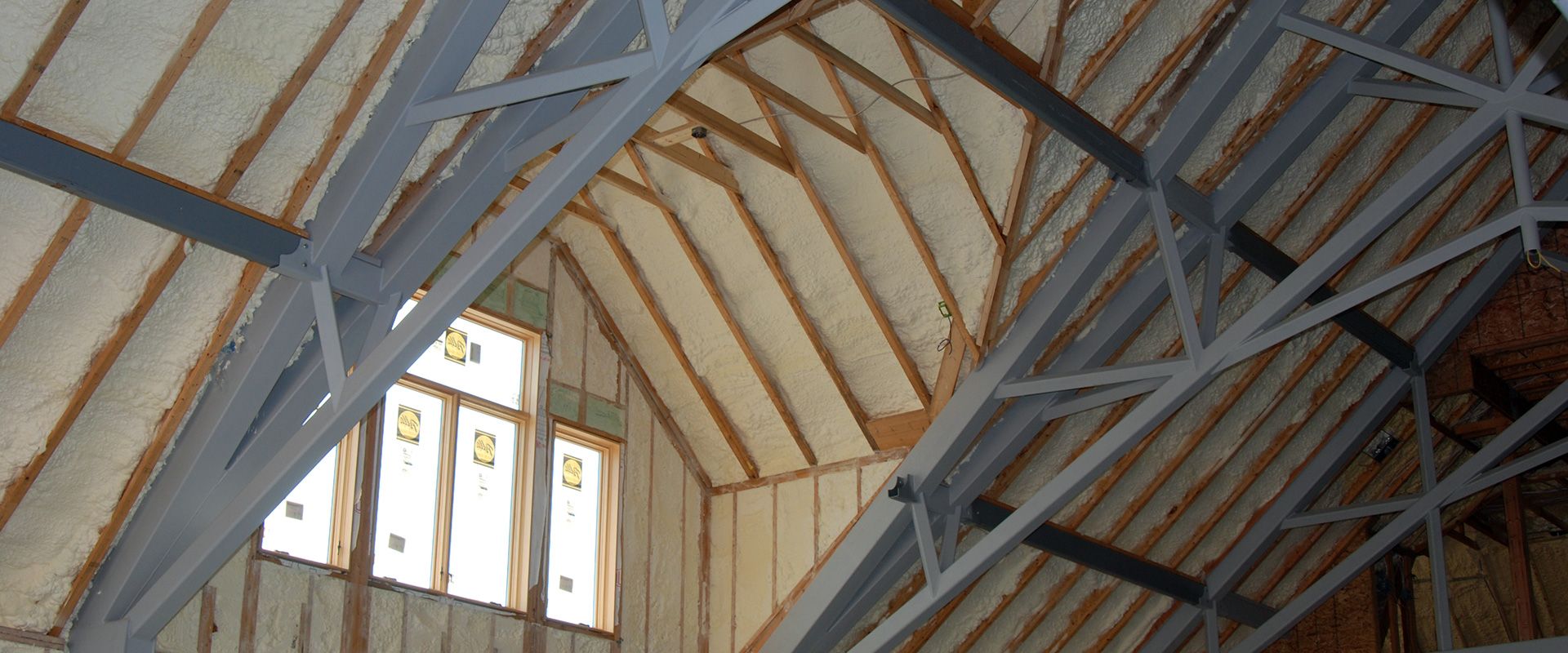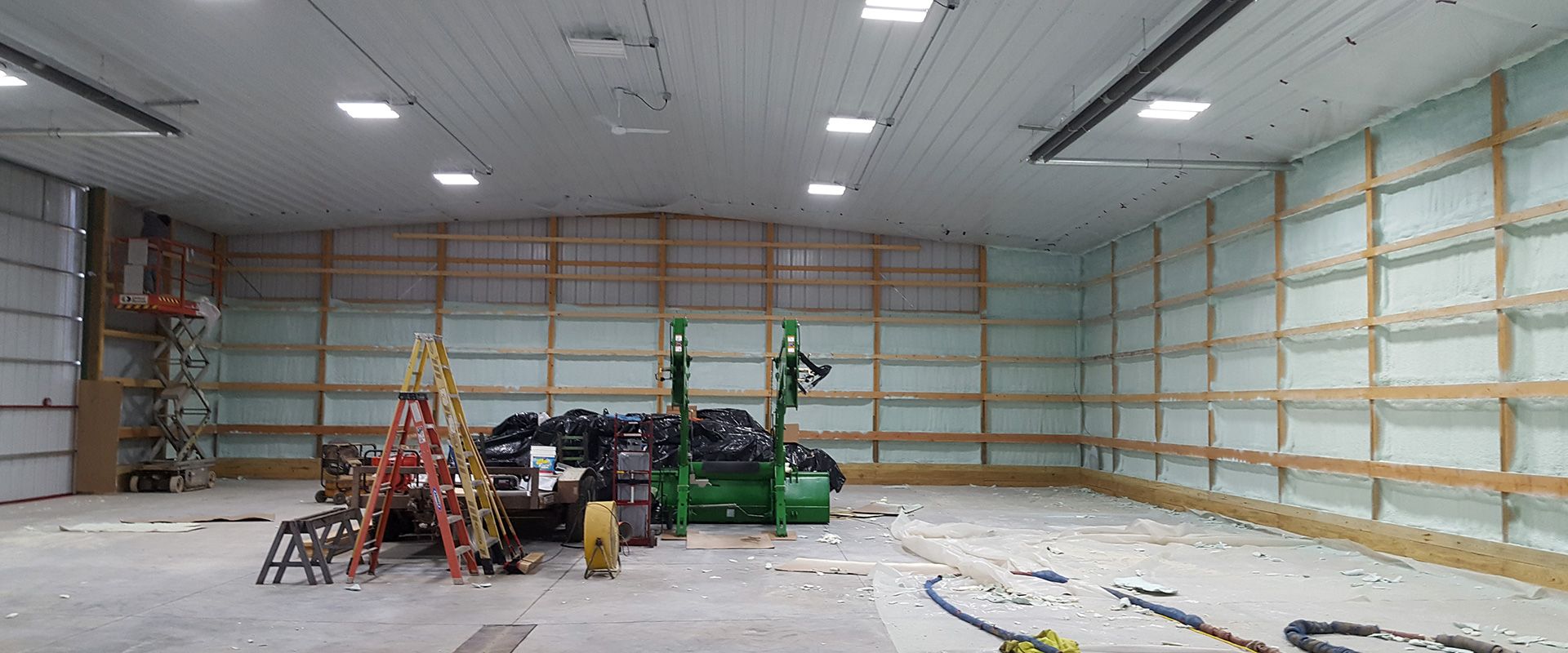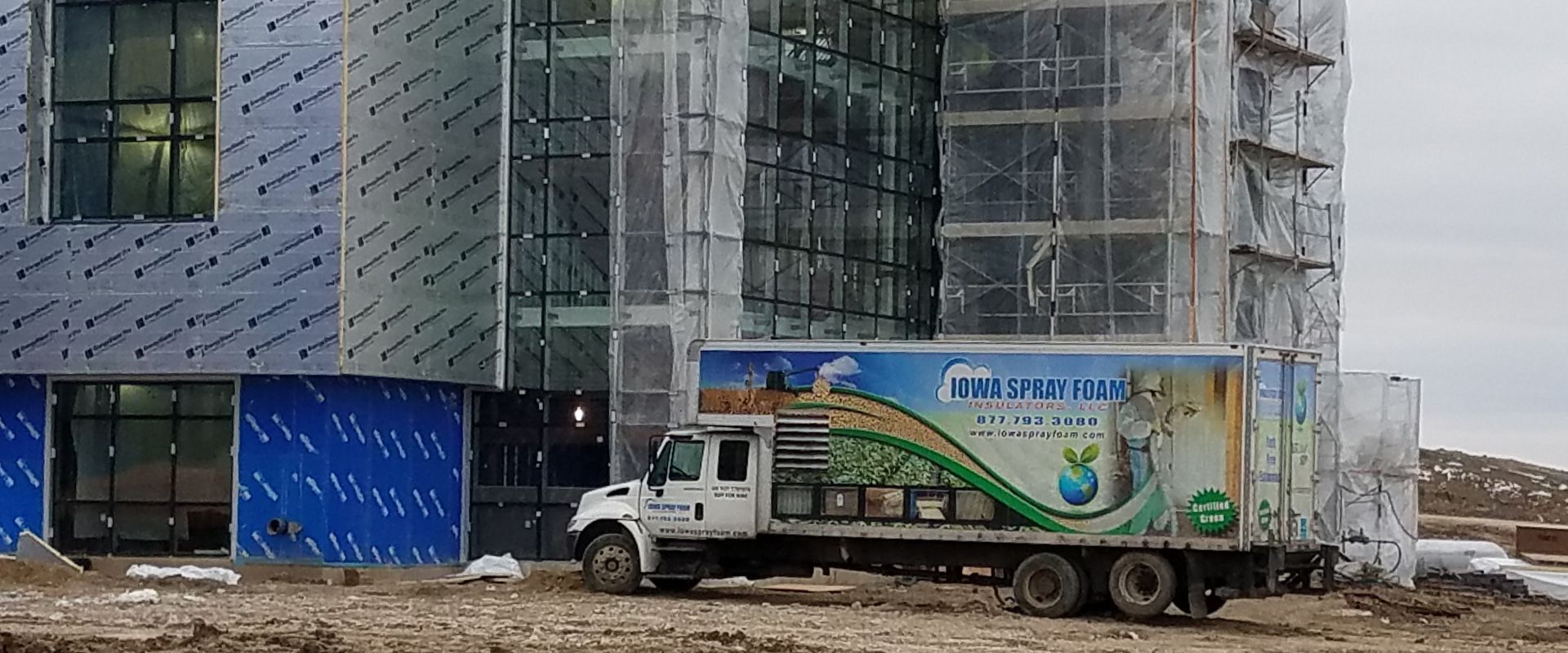-

We make homes comfortable and efficient.
-

Complex residential jobs done right!
-

Pole barns need spray foam.
-

Fireproofing and Spray Foam for Commercial Projects
Spray Foam Insulation and Fireproofing Contractors in Iowa
Iowa Spray Foam Insulators has been providing warm, comfortably insulated buildings since 2006. We are one of the oldest and most respected spray foam insulation companies in Iowa. We offer open cell spray foam, closed spray foam, roof coatings and fireproofing. Iowa Spray Foam has completed all kinds of projects such as new construction, remodels, agricultural, roof coatings for low sloped roofs, industrial and commercial. And we have completed projects for many locally and nationally recognized companies. We have the trained, experienced team members to spray almost any kind of material correctly that you can think of.
Our Spray Foam Insulation and Fireproofing Services
Residential Construction and Remodels Insulation
Pole Barn and Agricultural Insulation
Commercial, Industrial, and Fireproofing
Read Feedback from Our Customers
"Best thing I did before finishing my basement. Quiet, and the 1000 square foot basement is very warm. I am sure it will save on utilities. The install was seamless and their cleanup afterward was exceptional. Money well spent I highly recommend."
- Karl Stratemeyer
